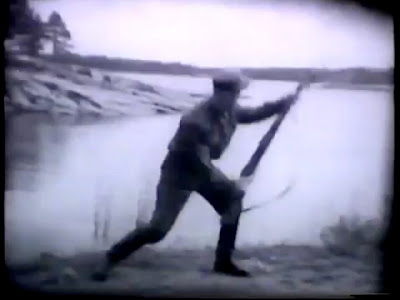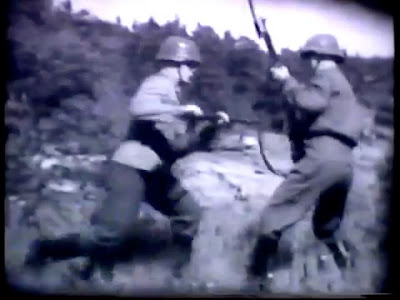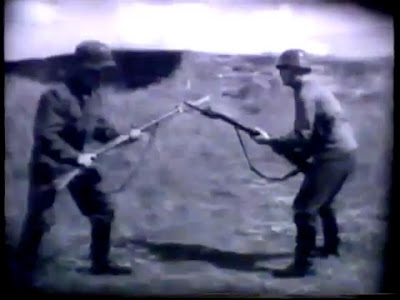Lähitaistelu (Close Combat) Part 8 - Lähitaistelu Kylmin Asein (Close Combat with Cold Weapons) - Fixed Bayonets
The fixed bayonet is probably the highlight of this system. This section shows the exact correlation between the unarmed stance and the armed stance, and utilises some quality training methods - it probably makes complete sense that this section is the real focus of close combat given the time period and weapons involved.
Not only do we see the basics of attack, but defences and counters to good attacks and feel-based responses. Note that close attacks shown using the blade to cut are demonstrated with a hitting then drawing motion.
Lähitaistelu Kylmin Asein (Close Combat with Cold Weapons)
Armed or unarmed, same body mechanics:
Sideways movement:
Body movement and practice:
Striking methods and targets:
Lunge, retreat and dodge:
Retreat seems to include throwing dirt in their face:
Downward hits are always at a steep angle:
These techniques work as a response to pressure given by the opponents rifle:
These defences seem to follow on from the pressure responses, when they try the above on you:
In this section, the defense to the presure response is followed with an attack:
Tight angle deflections with counters:
Deflection to a bind, follwed by an entry hitting with the butt:















































































































